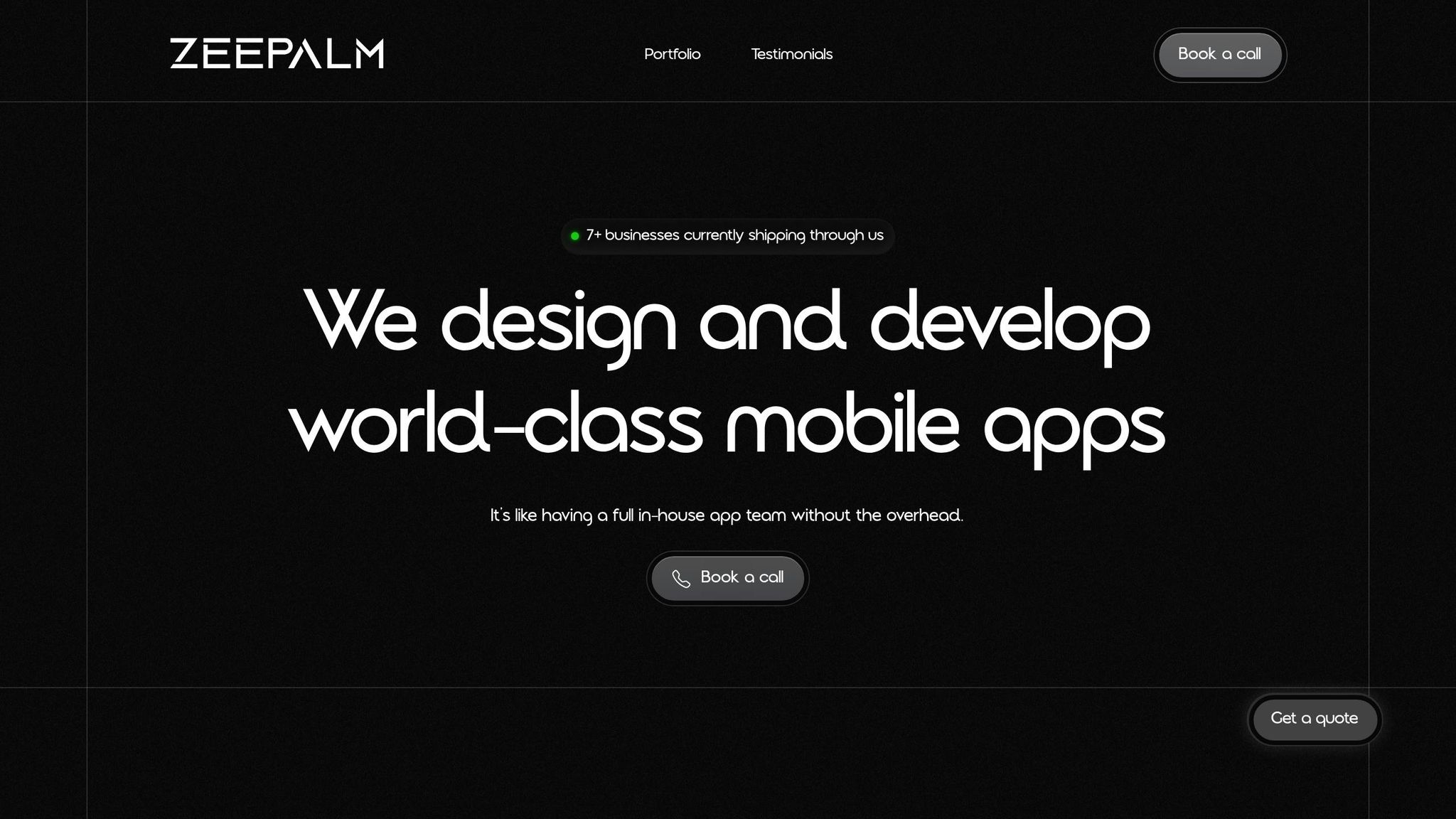Software development involves creating and maintaining software applications, frameworks, and other components. The process ranges from gathering requirements to deploying and testing the software.
A software development methodology is like a framework that directs the software development process. It provides a set of guidelines and best practices to ensure that the developed product meets quality standards and user requirements.
Components of software development methodology
The following are the core components of any software development methodology.
- Planning: This involves defining the project scope, identifying the requirements, creating a blueprint, and planning to ensure that the project is precisely defined and the team has a clear understanding of requirements.
- Design: Creating a detailed design for the software comprising architecture, UI, and data structures. This step is essential to guarantee that the software is well-structured and meets user requirements.
- Development: Creating a working product by coding, and actualising the idea.
- Testing: Testing software ensures that it meets the requirements and is free of defects. It guarantees the reliability of software.
- Deployment: This is the process of launching the software in the market, making it available to the users, and ensuring its reliability.
- Maintenance: Maintaining the software after it has been deployed includes fixing any bugs, adding new features, improving performance, etc.
A software development methodology ensures that the development process is smooth, helps to overcome hindrances, and avoids scope creep, budget overruns, and delays.
Top 10 Software Development Methodologies
There are numerous software methodologies to choose from each with its strengths and weaknesses. The best methodology for a project can be determined based on numerous factors such as the size and complexity of the project, team experience, budget, etc. The following are the most popular development practices.
1. Agile Development
The agile development methodology is based on an iterative and incremental development approach. Requirements and solutions are derived through the collective effort of independent, multi-functional teams.
Strengths:
- Flexible to change. Suitable for projects where the requirements are indistinct at the beginning.
- Promotes collaboration. Agile development requires close collaboration between the development team and the clients/end users. This can lead to high-quality finished products.
- It is incremental. Agile Development delivers working software in short increments, allowing early feedback from clients. Therefore, problems are identified and fixed at an early stage.
Shortcomings:
- Complexity. Requires more communication between developers and clients, and requires more flexibility and adaptability.
- Time-Consuming. It requires a lot of iterations.
2. Waterfall Development
This methodology follows a linear process, each phase should be completed before the next phase begins. It is a traditional development approach and is often contrasted with agile development.
Strength:
- Easy to plan. As each step has a clear starting and finishing mark.
- Efficiency. It can be efficient for projects with clear-cut requirements.
- Predictable. Waterfall development is predictable as the project schedule can be easily estimated.
Shortcomings:
- Not flexible to change. The changing requirements can demand the project be restarted.
- Less collaborative. As the requirements are gathered at the beginning, there is not much communication between the team and the clients during the development phase
- Time-Consuming. It can be relatively time-consuming as it requires better planning and documentation.
3. Lean Development
Lean development is based on the principles of Lean manufacturing. Lean manufacturing is a set of principles designed to reduce the inefficiency in the manufacturing process. Lean development applies this principle to the software development process, aiming to create high-quality software that meets the needs of users while minimizing waste and inefficiency.
Key Principles:
Lean development aims to eliminate wastes such as rework, defects, unnecessary activities, etc.
- Eliminate waste
- Build quality in
- Create knowledge
- Defer commitment
- Deliver fast
- Respect People
- Optimize the whole
These principles are designed to increase the overall efficiency of the development system.
Strengths:
- Empowers teams. Teams have the freedom to experiment and iterate on their models, empowering them to take ownership of their work.
- Increases agility. Teams often have to quickly respond to changes in requirements.
- Improves quality. Lean methodology prioritizes essential functions, lessening time wastage on unnecessary builds.
Shortcomings:
- Difficult decision-making. The need for customers to clearly define their requirements can complicate the decision-making process.
- Lack of documentation. Lean development emphasizes working software over comprehensive documentation.
- Inflexibility for structured projects or strict deadlines. Lean development involves a lot of experimentation and iteration, making it challenging to meet deadlines.
Although Lean is a relatively new development methodology, it has gained popularity because of its proficiency. It is designed to deliver the finished product in a timely and cost-effective manner.
4. Scrum Development:
Scrum is an agile development framework, where teams work on small and independent pieces of work (sprints). It is based on the idea of delivering working software at the end of each sprint.
Key Principles:
- Transparency among all stakeholders.
- Frequently reviewing the progress (reflection) resulting in increased efficiency.
- It offers adaptability and the possibility of reprioritizing tasks based on changing requirements.
Strengths:
- Promotes collaboration. Scrum promotes collaboration between team members and stakeholders.
- Quality driven. Scrum focuses on quality by incorporating testing and continuous improvement in the development process.
- Fast Delivery. Working on small, self-contained tasks contributes to efficient time management.
Shortcomings:
- Inefficient for small tasks. The team is required to go through the entire process for each task.
- Difficult to scale. As the size of the team increases communication can become difficult, managing the process can be complex, and the team may not be able to self organize
- Difficult to implement and manage. Scrum requires a high degree of discipline and visibility of the development process.
5. Extreme Programming (XP):
Extreme programming is another agile development framework that focuses on simplicity, testability, and communication. Teams work in short sprints and they regularly integrate and test their code. XP aims to produce higher-quality software. XP encourages collective code ownership and continuous refactoring.
Strengths:
- Simplicity. Emphasizes simplicity in the entire development process including code, design, and process itself.
- Testability. This helps to ensure that the software is working fine and makes it easy to find and fix bugs.
- Pair programming. XP teams often prefer pair programming, i.e., two people work on the same code. This helps to improve the quality of code.
Shortcomings:
- Difficult to implement. Requires a lot of discipline as the team needs to be able to work in short sprints, pair program, and regularly refactor their code.
- Costly. XP requires a high level of investment in training and tools. The team needs to be able to use agile development tools and have an understanding of XP principles.
- Difficult to scale. XP might not be suitable for large teams or complex projects as it requires close communication and collaboration.
Overall, XP is a very useful development framework and can help teams deliver high-quality software in a time-effective manner. But its shortcomings and limitations should be considered while choosing.
6. Rapid Application Development (RAD):
RAD is another agile development tool that is focused on speed and flexibility. It is based on prototyping and feedback rather than comprehensive planning. Developers perform in multiple iterations and updates rather than starting all over. It is preferable for projects with changing requirements.
Strengths:
- Speed and flexibility. Suitable for projects with tight deadlines and scope creep.
- User Involvement. RAD emphasizes user involvement throughout the development process, making sure that the finished product meets user requirements.
- Reusable components. RAD teams often use reusable blocks to build software, speeding up the process and making it cost-effective.
Shortcomings:
- This can lead to technical debt. While delivering software quickly, taking shortcuts in development can make it difficult to enhance the product in future
- Requires familiarity with agile tools. Teams need to be able to use agile development tools and have an understanding of RAD principles.
7. Dynamic System Development:
DSDM emphasizes the use of the dynamic systems theory model and an understanding of software systems’ behavior. This can help in identifying how the system will behave and identifying potential errors. It focuses on business needs. It involves modelling the system, analyzing the model, designing, implementing, and then testing the system.
Strengths:
- Help predict future behavior. This can be useful for planning and decision-making.
- Optimizing the system. DSDM can help identify and correct potential problems.
Shortcomings:
- Time-consuming. The teams need to have a deep understanding of dynamic systems theory.
- Difficult to validate. It can be difficult to validate the model against the real system as the real system can be too complex to be modelled accurately.
Dynamic systems development is a powerful tool that can be used to model and understand the behaviour of software systems. However, it can also be difficult and time-consuming to apply. The strengths and weaknesses of dynamic systems development should be keenly evaluated before using it to develop a particular software system.
8.Feature-Driven Development (FDD):
FDD is also an agile development method that emphasizes features. A feature is a small unit of functionality delivered to the client in a working state. It involves gathering requirements, creating a list of features, designing the features, and then developing and testing each feature independently.
Strengths:
- Incremental development. As software is developed in small manageable increments, the risk of potential failure is reduced.
- Documentation. FDD strongly focuses on documentation. This ensures that the software is maintainable.
Shortcomings:
- Time-consuming. As it requires a lot of planning and design.
- Difficult to change requirements. Changes in requirements can impact the feature list.
FDD is a powerful framework and can be very efficient if the requirements are described clearly however it can also be difficult to scale and time consuming.
9. Spiral Development:
Spiral development combines the elements of the waterfall and iterative methodologies, it is a risk-driven approach designed to minimize the chances of failure. It is diagrammatically represented by a spiral of many loops, the number of loops varies for each project. Each loop represents a phase of the software development process. It consists of planning, risk analysis, engineering, testing, and evaluation.
Strengths:
- Risk-driven. Spiral development is designed to identify and mitigate risks at an early stage.
- Incremental and flexible. It is an incremental approach, that allows flexibility in response to changing requirements.
- Improved quality. Multiple iterations result in improved quality and reliability.
Shortcomings:
- Time-consuming. As it requires a lot of planning and multiple evaluations, it can be very time-consuming.
- Costly. Spiral development can be very expensive as it requires significant investment in risk analysis and review.
- Difficult management. As the number of phases can be undetermined, time estimation can be very difficult.
Spiral development is an excellent framework, it can reduce the risk of failure. However, it can be time-consuming, expensive, and difficult to manage.
10. Kanban Methodology:
Kanban emphasizes visualizing the workflow and breaking it down into actionable pieces on a Kanban board. It is a pull-based methodology, it means the work is pulled into development when it's ready. Kanban involves visualizing the work, limiting work in progress, and continuous improvements.
Strengths:
- Better communication. Visualizing the workflow on a Kanban board helps to improve communication and collaboration among team members.
- Effective prioritization. Kanban techniques help employees focus on the most important tasks, resulting in high-quality products delivered promptly.
- Limiting work in progress. This ensures that the team is not overloaded and the deadlines are met.
Weaknesses:
- Less useful in dynamic environments. Kanban is suitable when the team knows what work needs to be done and can estimate timeframes for each task. However, in rapidly changing environments, it can be difficult to estimate the time required for each task.
- Difficult to scale. Kanban is suitable for smaller teams, as the team gets bigger, it becomes difficult to manage the Kanban board and creates a communication gap.
Kanban is a powerful software development methodology that can be a good fit for many teams and projects. However, it's important to consider its limitations before using it.
Conclusion:
Software development methodologies are more than just frameworks. They are blueprints for creating a successful project. By understanding the strengths and weaknesses of each approach, one can navigate the complex world of software development with confidence. This will help you to deliver products that meet user needs, uphold quality, and stand the test of time.
For custom software development, visit us at Zee Palm
For free premium front-end flutter kits, visit Flutter Coded Templates
Check out free Flutter Components, visit Flutter Components Library









